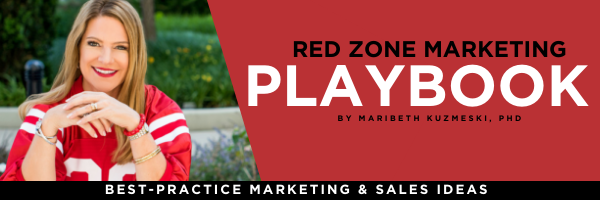What is perhaps the biggest challenge advisors are facing with marketing in 2021?
In the cluttered and fiercely competitive advisory industry, it’s standing out from the crowd.
The biggest problem for solo advisors is not technology, nor is it even an economy of scale problem. It is a very big, very real differentiation problem. Today, there is very little to differentiate advisors from one another.
It wasn’t long ago that offering comprehensive financial planning was a differentiator. Today it’s just table stakes to get in the game. And it’s ridiculously difficult to demonstrate excellence when you’re lost in a sea of average.
How Do You Get Prospects to Pay Attention?
The biggest hurdle for advisors trying to differentiate themselves is being able to get their message out. They’re not about to out-market firms 20 or 100 times their size. You can have the greatest value proposition in the world, but it does you little good unless you can get it to the right people consistently.
However, with the right marketing communications, automation, and content management technology, it can be done. Here is what’s working for top-performing advisors today.
1) Personalize Everything!
Not finding a way to actively share with others what you do negates your best chance of ever being able to serve them. But how do you get them to “stop the scroll” and pay attention to you?
Personalize it! No, I don’t just mean brand your assets and throw your logos on top. I mean show your face! This year, after having been quarantined at home and forced to meet friends, family, and our advisors virtually, people are craving connection more than ever. This is why we saw a significant uptick in video production across financial advisor social media platforms.
And guess what? Those advisors are killing it.
People want to connect with people, and ultimately decide to do business with people they like. In a business environment full of automation, a touch of humanity can truly set you apart from the competition. Putting yourself out there doesn’t just “stop the scroll” and encourage users to interact with your content, it actually imprints on their memory. Your voice, your body language, and your message foster a bond with a prospect in a way that other social assets cannot.
What about email? You can incorporate your personal touches in email, as well. Simply use a service like Loom to record short videos to send out rather than text-only communication. Loom links can also be sent via LinkedIn Messages for a deeper, more meaningful touchpoint.
Pro Tip: Use a P.S. on your emails to make personalized recommendations to clients on topics outside of finance you think they might be interested in. A spot-on podcast or book recommendation can go a long way! If your client enjoys photography, perhaps recommend an artist’s installation they can check out nearby; if they enjoy cooking, send over a cookbook recommendation or recipe you particularly enjoy. These personal touches can work wonders in making you a more memorable and referable advisor.
2) Don’t Over-Streamline
If you aren’t careful, you can streamline the client experience so much that the experience is eliminated altogether. Streamlining is encouraged to facilitate day-to-day operations and improve your productivity (which ultimately benefits clients), but be careful not to eliminate the “personal” side of your personalized service. Don’t make them question if they’ve chosen the wrong advisor.
This all goes back to one major theme here: you have to personalize the financial advisor-client experience!
The answer? Streamline the parts of the experience that don’t cut you out of the picture with the client. For example, back-office operations or reminders to personally reach out to clients. Automate the parts the client doesn’t see so that you remain front and center when it comes to client-facing interaction.
3) Create an Unforgettable Client Experience from the Start
The litmus test of whether or not you are creating an experience that people find exceedingly valuable can be quantified by the number of referrals you receive. Acquiring referrals often has less to do with how often you ask for them, and more about how you make the referring client feel. Even more so, a referral introduction happens most frequently when the client is actually surprised by how they feel about you. And how a client feels about you starts the minute they learn about or begin interacting with your firm. This is precisely why your digital presence—from your website to your social media pages to third party publications—must be spot-on.
Most investors, before going to discuss their money with anyone, will conduct a Google search. What they find will determine their decision to move forward or look elsewhere. Advisors with a strong online presence today TRULY stand apart.
For years, compliance has made it difficult for advisors to enter into this space. Now that many compliance departments have eased their restrictions on participation in social media, advisors are delivering unbelievable results with online tools such as webinars, podcasts, email marketing, social media ads, and more!
Start with a strong website or online bio that clearly defines you and the benefits of working with your firm, and always use pictures of you and your staff as they are always the best attention-grabbers.
Next, update your LinkedIn profile. The results that advisors are seeing include an increase in the number of referrals received and converted since pre-social media. They are also receiving leads from qualified prospects – something that never happened in the past.
But don’t stop there. This is where you’ll want to build out a sales funnel to ultimately draw prospects and clients to book a call. Speak with your financial services marketing professional about how to make those next connections and propel the growth of your advisory firm.
Showing Up is Half the Battle
Standing out from the crowd for a financial professional is not an easy task. But with a little work on these 3 approaches, it is not nearly as difficult as you may think.
Ready to get started?



